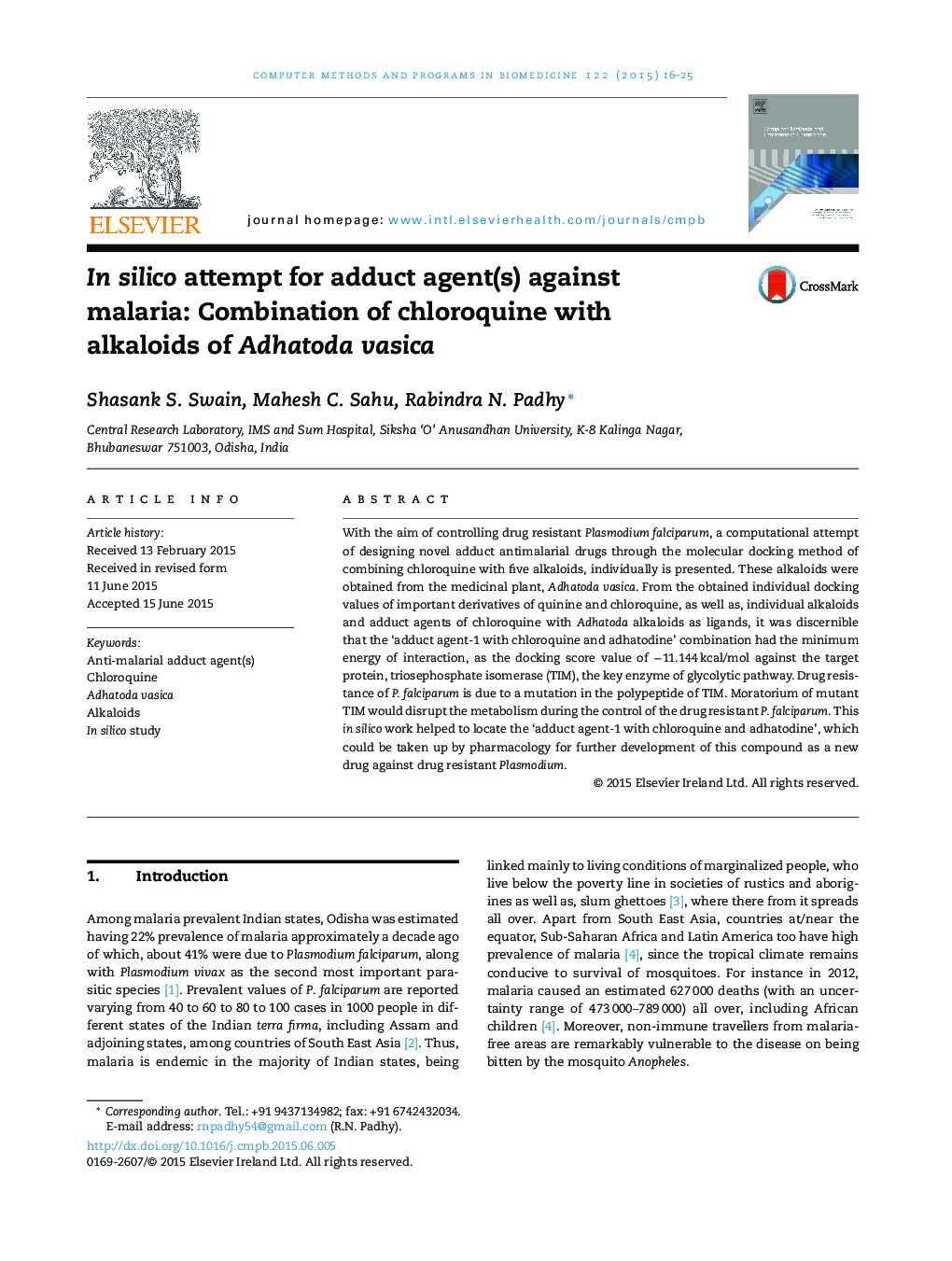| Article ID | Journal | Published Year | Pages | File Type |
|---|---|---|---|---|
| 468306 | Computer Methods and Programs in Biomedicine | 2015 | 10 Pages |
•Malaria is endemic in the majority of tropical countries and to control strains of Plasmodium falciparum resistant to chloroquine and quinine, newer agents are needed.•Today, artemisinin based drugs are in use, but artemisinin resistance in P. falciparum has been reported in several Asian countries.•The molecular docking method of combining chloroquine with 5 alkaloids, individually of the medicinal plant, Adhatoda vasica is presented for the control drug resistant P. falciparum.•This in silico work helped to locate the ‘adduct agent-1with chloroquine and adhatodine’, for further use as a new drug, against drug resistant Plasmodium.
With the aim of controlling drug resistant Plasmodium falciparum, a computational attempt of designing novel adduct antimalarial drugs through the molecular docking method of combining chloroquine with five alkaloids, individually is presented. These alkaloids were obtained from the medicinal plant, Adhatoda vasica. From the obtained individual docking values of important derivatives of quinine and chloroquine, as well as, individual alkaloids and adduct agents of chloroquine with Adhatoda alkaloids as ligands, it was discernible that the ‘adduct agent-1 with chloroquine and adhatodine’ combination had the minimum energy of interaction, as the docking score value of −11.144 kcal/mol against the target protein, triosephosphate isomerase (TIM), the key enzyme of glycolytic pathway. Drug resistance of P. falciparum is due to a mutation in the polypeptide of TIM. Moratorium of mutant TIM would disrupt the metabolism during the control of the drug resistant P. falciparum. This in silico work helped to locate the ‘adduct agent-1 with chloroquine and adhatodine’, which could be taken up by pharmacology for further development of this compound as a new drug against drug resistant Plasmodium.
